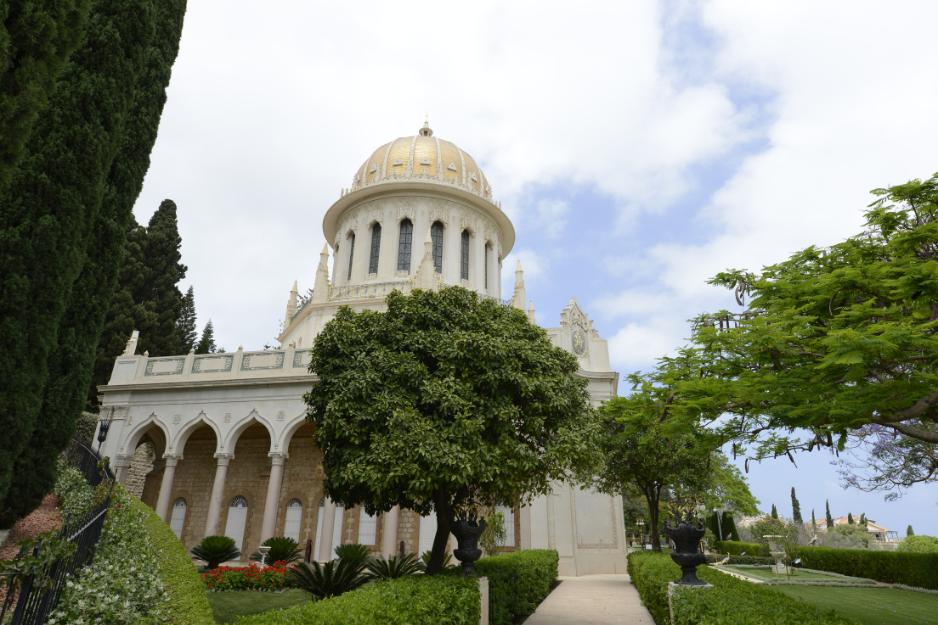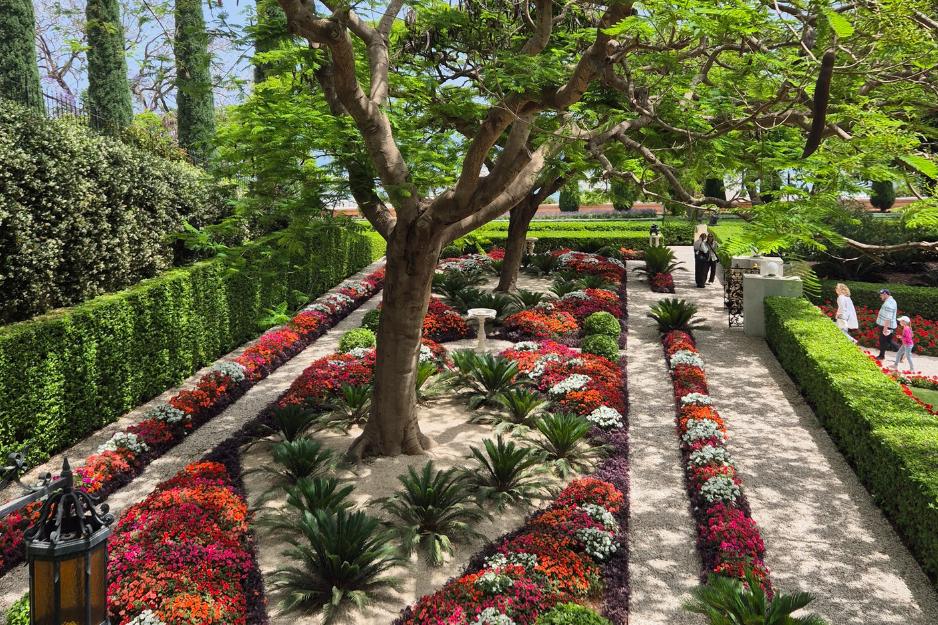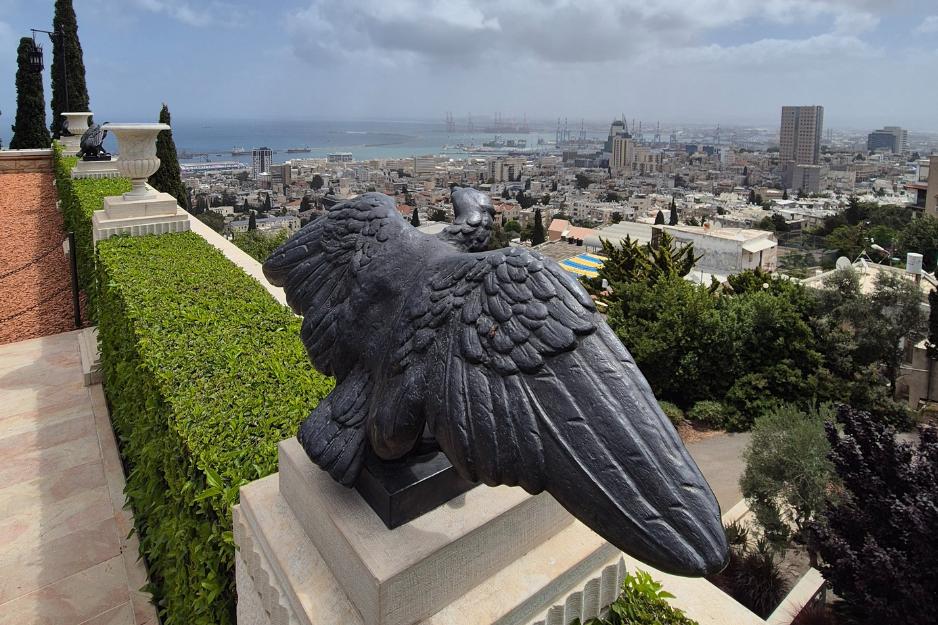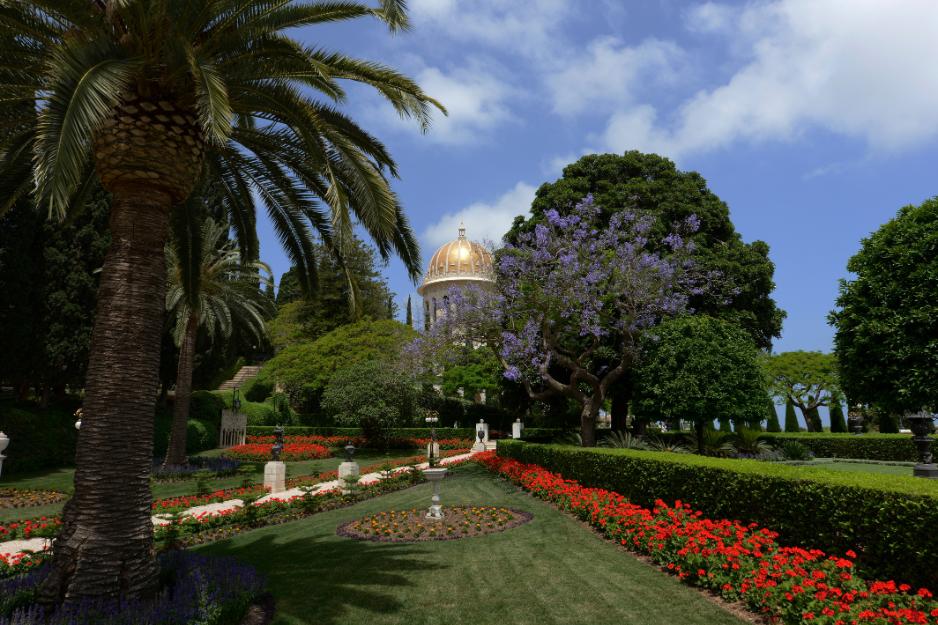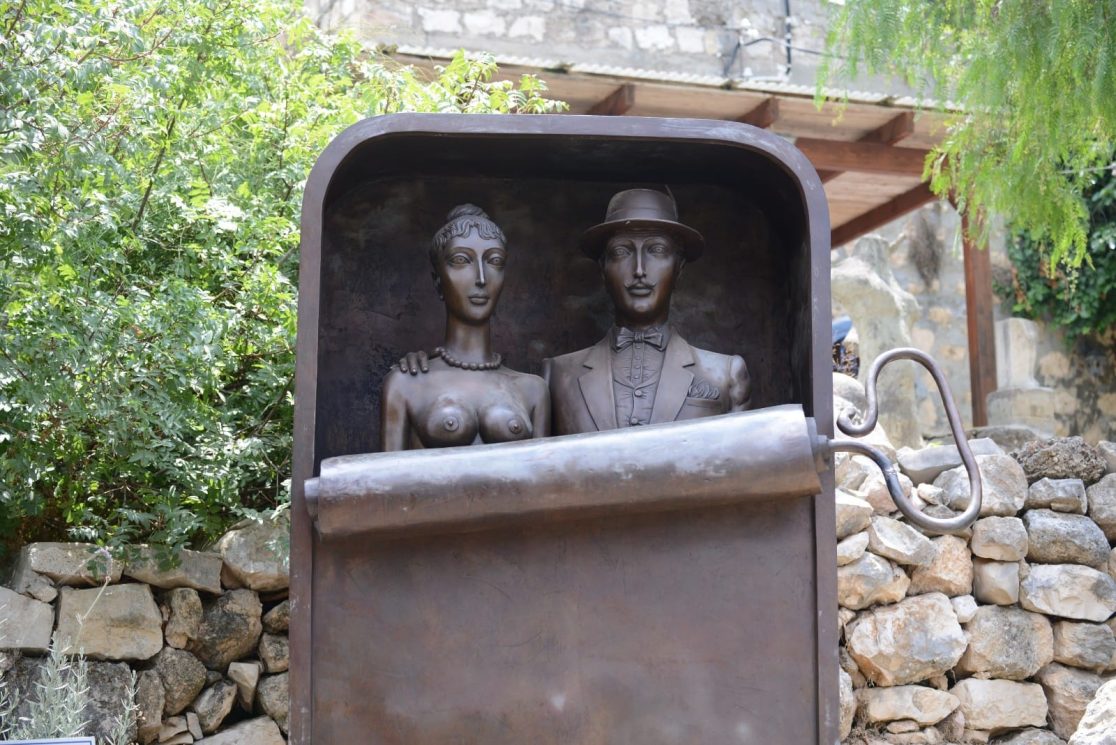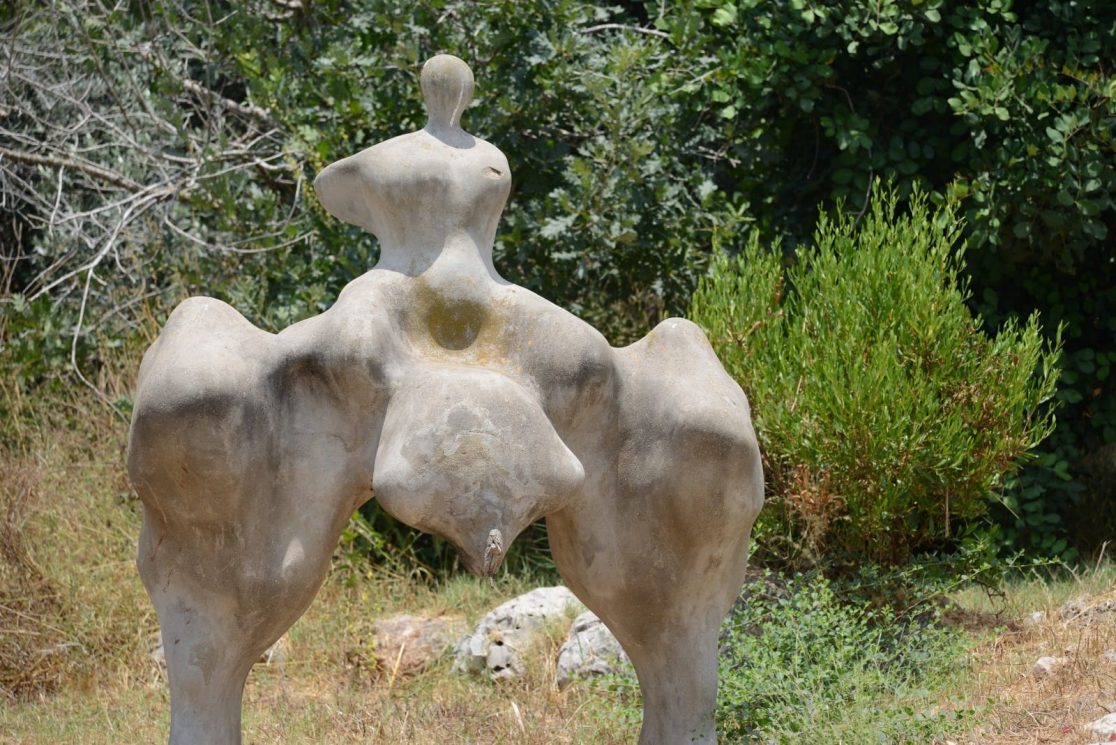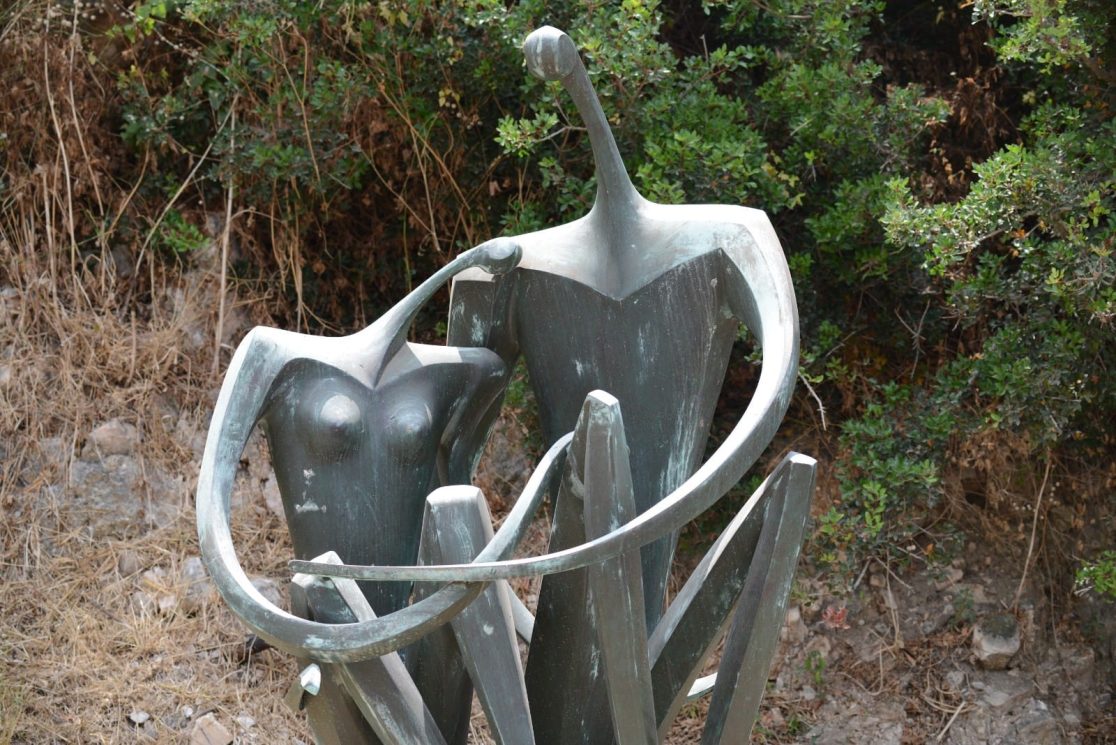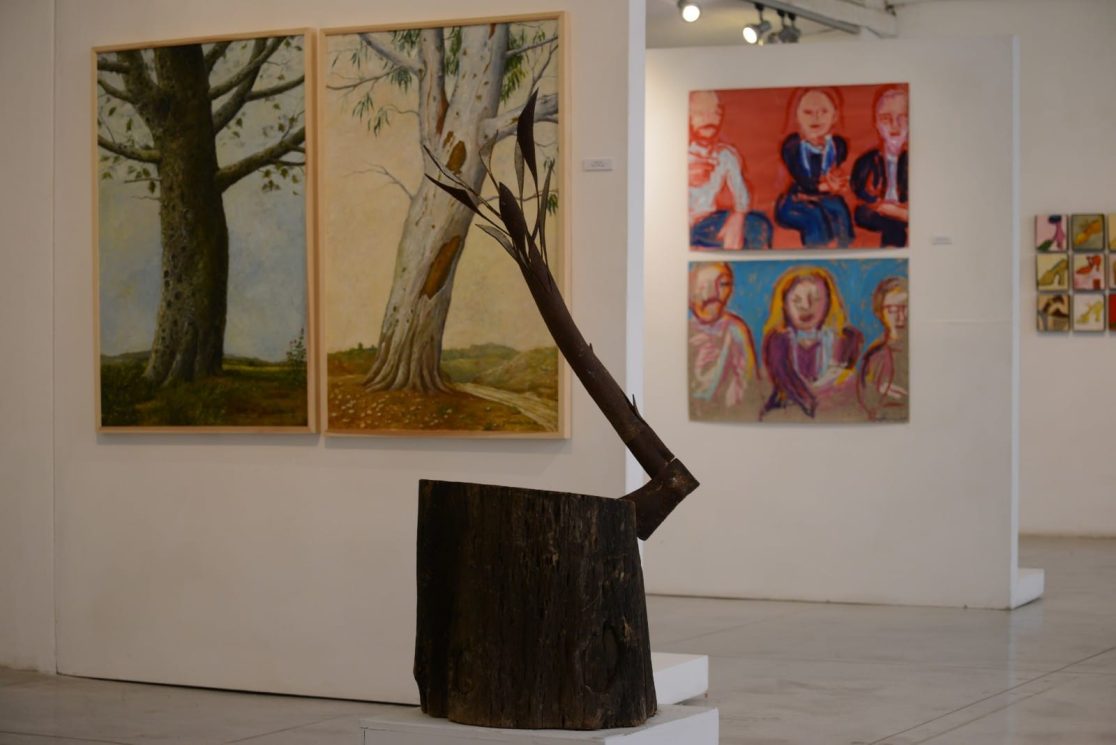Haifa Bahai gardens, the German colony & Ein Hod

Haifa’s Bahá’í Gardens shine with 19 stunning terraces cascading down Mount Carmel to Ben Gurion Boulevard, best seen via guided tour. Nearby, Haifa's German Colony buzzes with cafés and history, while Ein-Hod Artists’ Village - only 10 minutes out, adds creative charm with galleries, greenery, and bohemian vibes.
Written by Zvika Gasner Koheleth 12-December-2024 ( Originally 11-March-2019, 01-April-2021 ) Photography by Angela Hechtfisch
Haifa General Info
Haifa, Israel’s third-largest city, climbs the slopes of Mount Carmel and stretches along the northern coastline. With about 300,000 residents, it anchors the Haifa metropolitan area. The city hosts Israel’s second-largest commercial port and the Bahá’í World Centre—recognized by UNESCO—making it a hub for trade, culture, and global pilgrimage.
Beyond its modern role, Haifa packs more than 3,000 years of history into its hills and coastline. Over the centuries, Canaanites, Romans, Ottomans, and the British all ruled here—until it finally became part of modern Israel. Today, Haifa shines as a bustling seaport on the Mediterranean, just 90 km north of Tel Aviv and a short hop from the ancient city of Akko, and is the beating heart of northern Israel.
The city is big on brains too, with Haifa University, the Technion, and the famous Reali School shaping generations. It’s also a powerhouse in tech, thanks to the Matam high-tech park, and unique with Israel’s only subway—the Carmelit.
Haifa Bay drives the economy with industry, refineries, and chemical plants, but the city’s passion spills into sports too. Football fans flock to Sammy Ofer Stadium, home to 30,000 cheering supporters of Maccabi Haifa—one of Israel’s top four clubs.
Haifa’s German Colony
We kicked off our vacation at the Golden Crown Hotel, right at the gateway to Haifa’s German Colony-a 19th-century Templer village full of history, and one of several German Colonies in Israel. From our room, the sea view over the harbor was stunning, and the back view? The breathtaking Bahá’í Gardens.
Ben Gurion Avenue, the colony’s main street, bursts with cafés and restaurants buzzing with life from morning till late at night. From the bottom of the street, you look straight up at the 19 terraces stretching a full kilometer, crowned by the Bahai Garden golden-domed shrine at the center.
Haifa’s Bahai’s garden
Entrance to the Bahá’í Gardens is free, but we highly recommend joining a guided tour—registration is easy online at the official Bahá’í website, and it gives you wider access. The 45-minute tour shares insights about the Bahá’í faith, followed by a sweeping panorama of Haifa Bay. If you prefer exploring on your own, you can still walk through three limited sections of the gardens independently between 09:00–17:00. Full access, however, is reserved for Bahá’í believers only.
The English tour runs daily at 10:00 (except Mondays). The Shrine of the Báb and the inner gardens are open to the public only from 09:00–12:00. Since the gardens are built on the slopes of Mount Carmel, it’s best to start from the top entrance at Louis Promenade—where you’ll enjoy one of the most spectacular views in all of Israel—and walk downhill. Louis Promenade itself is a must—come during the day for the view, and at night for the magical city lights.
When you finish—whether at the top or bottom—just grab a bus (115, 136, 30, 31, or 23) for only 8 shekels and ride back to your starting point.
Complementing Haifa’s Bahai Gardens, the Shrine of Baháʼu’lláh—better known as Akko’s Bahai Gardens—stands as the holiest site for Bahá’í faith. However, As of July 2025, the Akko gardens remain closed to visitors.
Haifa’s Masada street
Masada Street is often called the hipster corner of Haifa. It’s small and not as buzzing as you might expect, but still worth a stroll for its quirky cafés, colorful graffiti, and artsy vibe. Just skip Saturdays—most places are closed.
Haifa’s “Holiday of Holidays” festival
Haifa itself is all about coexistence. Jews and Arabs live side by side, creating a unique multicultural atmosphere. Every December (6th–30th), Haifa’s German Colony hosts the “Holiday of Holidays” festival, celebrating Hanukkah, Christmas, and Ramadan together in one joyful event.
The locals are famously warm and down-to-earth, food prices are friendlier than in other Israeli cities, and in summer, Haifa’s golden beaches are the perfect place to chill.
“Ein-Hod” artists Village
On our way back south toward Tel Aviv, we made a stop at Ein Hod, Israel’s only artists’ village. Nestled on a hill off the old Tel Aviv–Haifa highway, it overlooks the Mediterranean and the ancient Atlit fortress—what a view!
Founded in 1953 by Marcel Janco, one of the pioneers of the Dada art movement, Ein Hod still carries the avant-garde spirit. The Janco-Dada Museum showcases his legacy, with a permanent exhibition of his work and plenty of inspiration for today’s artists.
The village itself is a living gallery. Painters, sculptors, musicians, writers, and theater creators all call it home, surrounded by lush greenery and charming stone houses. Strolling between the friendly home galleries is a real treat, but since the streets climb up and down the hill, comfy shoes are a must.
We wrapped up our visit at Dona Rosa, a bohemian-style Argentinian restaurant that serves meat dishes—a perfect ending to a creative day for for carnivores.
Top Hotels in Haifa
Looking for hotels in Haifa? Top picks located at Haifa’s German colony include the stylish Colony Hotel, the Golden Crown, and the trendy Schumacher Hotel.



























